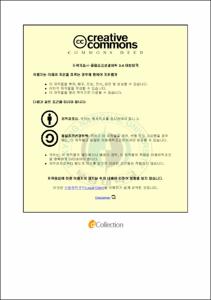누적 열 스트레스 지수를 이용한 한반도 폭염의 발생특성 연구
- Abstract
- This study examined occurrence characteristics and variation of heat waves in South Korea and analyzed synoptic characteristics of the heat wave that occurred for 14 years (1999-2012) using AH(Accumulated Heat stress Index) and AHI(Accumulated Heat stress Index). AH is an index digitized using the heat stresses accumulated for 72 hours with the time-weighted function, and AHI is the standardized value of AH using the standard deviation of normal values.
Through the period, Miryang has shown the largest AHI and Jinju has the smallest one. It means that these are the places where accumulation of heat stress is the strongest (weakest). Heat wave was defined from standard of danger for AHI (0.85). The heat wave in South Korea as a whole begins on the 12th July, ends on the 31st August. The frequency of heat wave was the biggest in Miryang (36.4 days), but the duration of heat wave was the longest in Goheung (24.5 days). The frequency and longest duration show similar spatial distribution, it means that the heat wave is continuously longer in the place where heat wave occurs frequently. The longest duration of heat wave has the value of 5~25 days averagely, but in 2010, the heat wave occurred which has the duration of 50~60days. The onset date of heat wave of whole South Korea is getting earlier with the trend of -7.3 days/decade, the end date is becoming later with the trend 4.3 days/decade and the frequency is increasing with the trend of 15.8 /decade. The annual maximum AHI is also increasing with the trend 0.28 /decade. So, the heat wave duration is predicted to be longer, and the intensity and frequency also will be stronger than now. From the annual maximum value of AHI and maximum temperature, it was confirmed that the severe heat wave year was 2010 and weak year was 2003.
The synoptic characteristics of 2010, the selected heat wave year, show the powerful expansion of North Pacific High compare with normal year (1981-2010). As a result, the high temperature and humid air which follow at the edge of anticyclone in the months of July and August made the heat wave severe and longer.
- Issued Date
- 2014
- Awarded Date
- 2014. 2
- Type
- Dissertation
- Publisher
- 부경대학교
- Affiliation
- 대학원
- Department
- 대학원 지구환경시스템과학부환경대기과학전공
- Advisor
- 변희룡
- Table Of Contents
- Abstract vi
1. Introduction 1
2. Data and Method 4
2.1 Temperature and Dew point temperature 4
2.2 AH and AHI 5
3. Definition of Heat wave and its Spatio-temporal Characteristics 7
3.1 Definition of Heat wave 7
3.2 Spatial Distribution of Heat wave 9
3.3 Annual Variation of Heat wave 15
4. Synoptic Characteristics of Heat wave 23
4.1 Case of 2010 Heat wave 23
4.2 Synoptic Characteristics of Heat wave 25
5. Summary and Discussion 30
REFERENCES 32
- Degree
- Master
- Appears in Collections:
- 대학원 > 지구환경시스템과학부-환경대기과학전공
- Files in This Item:
-
-
Download
 누적 열 스트레스 지수를 이용한 한반도 폭염의 발생특성 연구.pdf
기타 데이터 / 2.86 MB / Adobe PDF
누적 열 스트레스 지수를 이용한 한반도 폭염의 발생특성 연구.pdf
기타 데이터 / 2.86 MB / Adobe PDF
-
Items in Repository are protected by copyright, with all rights reserved, unless otherwise indicated.